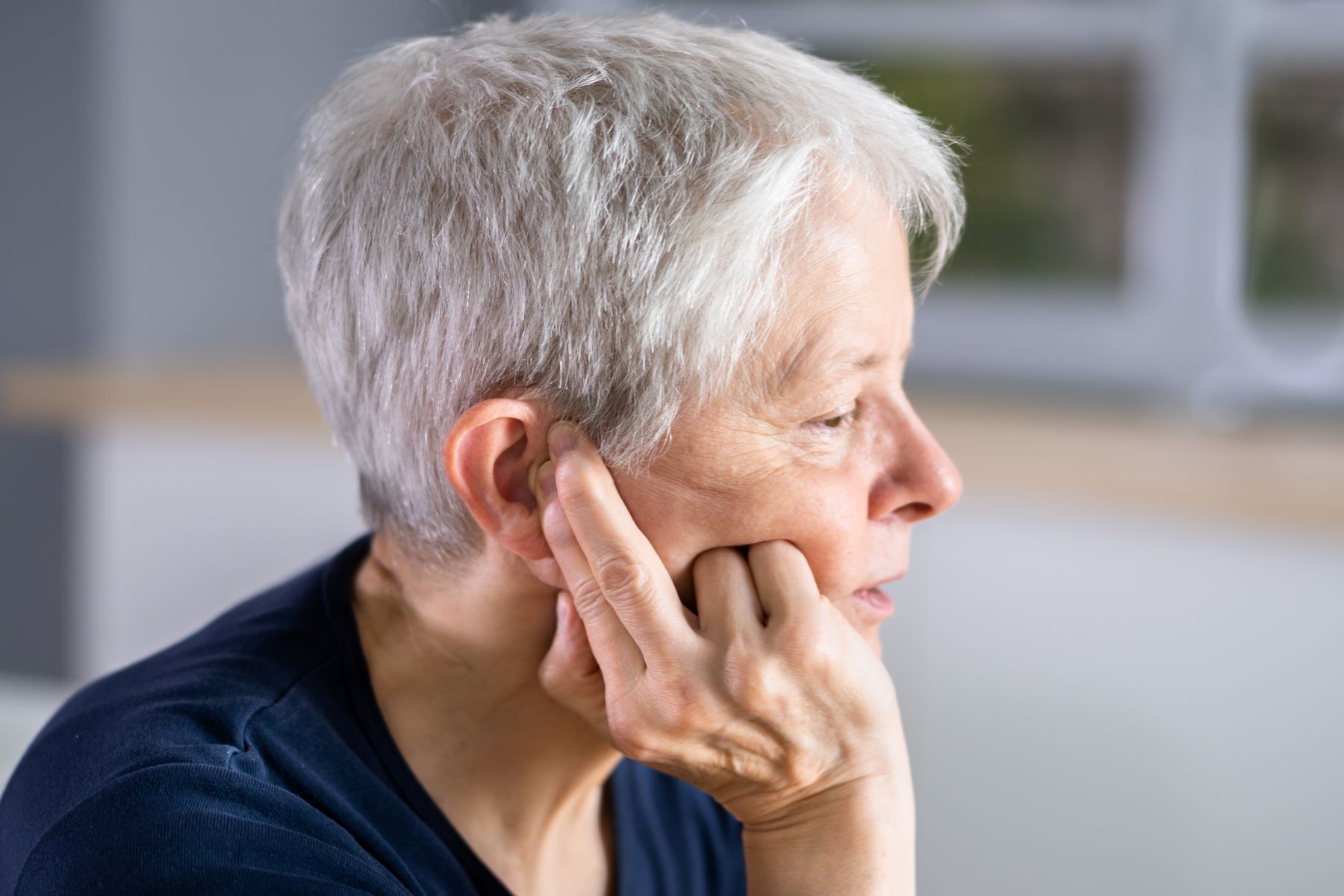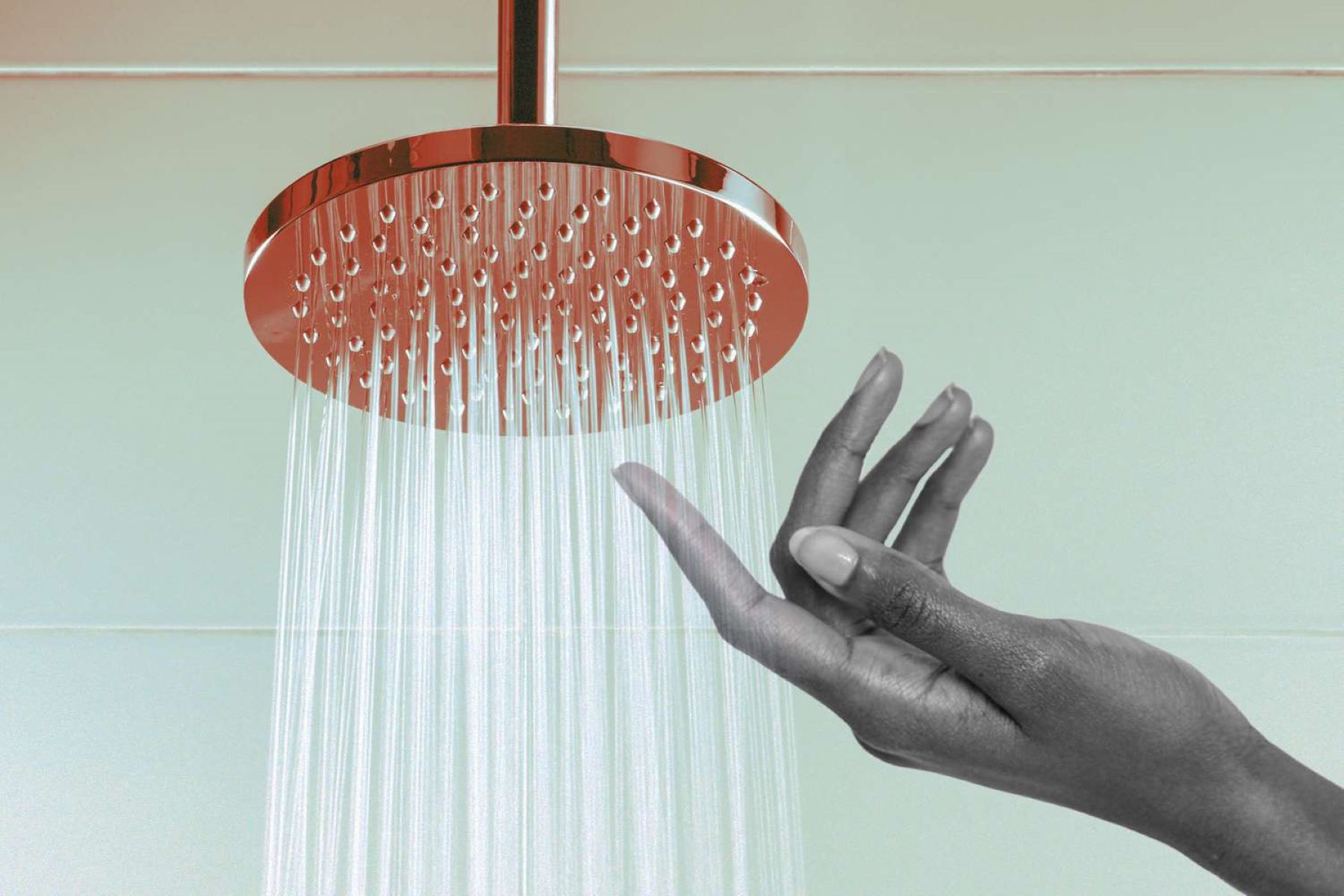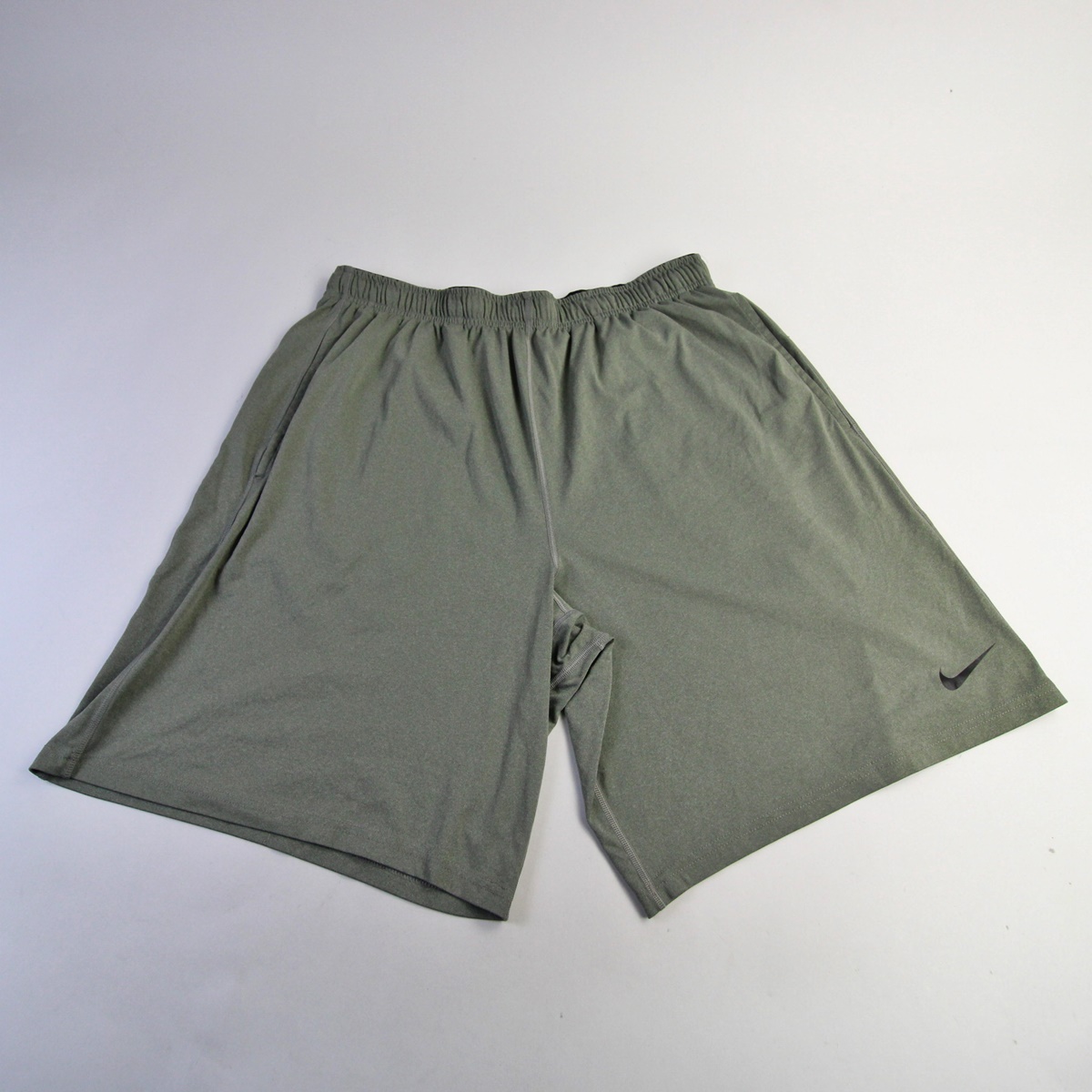

Featured
Why Do My Ears Clog When I Workout
Published: August 12, 2023
Discover why your ears clog up during workouts in this featured article. Explore the causes and find out how to prevent this discomfort.
Introduction
Have you ever experienced the sensation of your ears feeling clogged or blocked during a workout? If so, you’re not alone. Many individuals, from avid gym-goers to occasional exercisers, have encountered this discomfort while engaging in physical activities. While it can be a frustrating experience, understanding why your ears clog during a workout is the first step towards finding a solution.
To comprehend this phenomenon, it’s essential to familiarize yourself with the structure of the Eustachian tube. The Eustachian tube is a narrow passageway that connects the middle ear to the upper throat and nasal cavity. Its primary role is to equalize the pressure between the middle ear and the external environment, ensuring that the eardrum functions optimally.
During intense physical activity, factors such as increased breathing rate, rapid changes in body position, and increased blood flow can lead to fluctuations in pressure within the middle ear. When these pressure changes occur rapidly or become imbalanced, the Eustachian tube may struggle to adjust accordingly, resulting in a feeling of fullness, blockage, or clogging in the ears.
There are various causes for ears clogging during exercise. One common factor is Eustachian tube dysfunction. Eustachian tube dysfunction occurs when the Eustachian tube fails to open or close properly, causing imbalances in pressure. This dysfunction can be caused by factors such as allergies, sinus infections, nasal congestion, or even anatomical abnormalities.
Furthermore, physical activities often involve rapid movements and changes in body position. This can affect the balance of pressure within the middle ear and put additional strain on the Eustachian tube. The sudden pressure changes combined with the increased blood flow during exercise can contribute to the sensation of clogged ears.
While experiencing clogged ears during exercise can be uncomfortable, there are several ways to manage and alleviate this discomfort. It’s important to take precautions and implement preventive measures to reduce the incidence of Eustachian tube dysfunction and maintain optimal ear health.
In the following sections, we will delve deeper into the causes of ears clogging during workouts, explore the connection between physical activity and Eustachian tube dysfunction, and discuss effective strategies to manage and prevent this issue.
Understanding Eustachian Tube
The Eustachian tube, also known as the auditory tube, is a small tube that connects the middle ear to the upper throat and nasal cavity. This tube serves a vital role in regulating the pressure within the middle ear, ensuring that the eardrum functions effectively.
The Eustachian tube is normally closed, but it opens periodically to equalize the pressure between the middle ear and the external environment. It allows air to flow into the middle ear to compensate for changes in atmospheric pressure or pressure caused by movements such as swallowing, yawning, or talking.
The tube is lined with cells that produce mucus, which helps to keep the tube clear and functioning properly. It is also equipped with tiny hair-like structures called cilia that move in coordinated motions to help remove any excess mucus or debris from the tube.
When the pressure in the middle ear becomes imbalanced, the Eustachian tube may struggle to open or close appropriately, leading to various ear-related issues. For example, if the tube fails to open when necessary, the pressure within the middle ear can become lower than the external pressure, resulting in a sensation of ear clogging or fullness.
Conversely, if the Eustachian tube fails to close properly, it can lead to intermittent or chronic Eustachian tube dysfunction. This dysfunction can cause recurring problems such as ear infections, hearing difficulties, and persistent clogging or popping sensations in the ears.
Eustachian tube dysfunction can be caused by various factors, including:
- Allergies: Allergic reactions can lead to inflammation and congestion in the nasal passages and Eustachian tube, hindering proper functioning.
- Sinus infections: Infections in the sinuses can cause swelling and blockage of the Eustachian tube.
- Nasal congestion: Nasal congestion due to colds, allergies, or other respiratory conditions can cause the Eustachian tube to become blocked.
- Anatomical abnormalities: Certain individuals may have naturally narrow or poorly functioning Eustachian tubes due to structural abnormalities.
Understanding the anatomy and function of the Eustachian tube is crucial in comprehending why your ears may clog during a workout. The next section will explore the causes behind ears clogging during exercise, shedding light on how physical activity and Eustachian tube dysfunction are interconnected.
Causes of Ears Clogging During Workout
Experiencing clogged ears during a workout can be attributed to several factors. Understanding these causes can help shed light on why this discomfort occurs and how to prevent it in the future.
1. Eustachian Tube Dysfunction: As mentioned earlier, Eustachian tube dysfunction can lead to imbalance in pressure between the middle ear and the external environment. During physical exercise, the increased blood flow and rapid movements can further strain the Eustachian tube, making it more difficult for it to open and close properly. This dysfunction combined with the fluctuating pressure can result in ears feeling clogged or full.
2. Rapid Pressure Changes: Physical activities often involve quick changes in body position, such as jumping, running, or weightlifting. These movements can cause rapid changes in the pressure within the middle ear, putting stress on the Eustachian tube. If the tube is unable to adjust quickly enough to equalize the pressure, it can lead to a feeling of clogged ears.
3. Increased Breathing Rate: During exercise, your breathing rate and depth increase to supply your muscles with oxygen. This rapid breathing can create pressure changes in the airways, including the Eustachian tube. The continuous fluctuations in pressure can cause temporary ear clogging or fullness.
4. Dehydration: Dehydration can exacerbate Eustachian tube dysfunction and increase the likelihood of ears clogging during a workout. When you are dehydrated, the mucus production in the Eustachian tube decreases, making it difficult for the tube to function properly. This can lead to a feeling of blockage or fullness in the ears.
5. Allergies and Sinus Issues: Allergic reactions, sinus infections, and nasal congestion can cause inflammation and blockage in the nasal passages and Eustachian tube. When the Eustachian tube is obstructed, it becomes challenging for pressure to equalize, resulting in clogged ears during exercise.
6. Earwax Buildup: Excessive earwax can also contribute to the feeling of clogged ears during a workout. When earwax accumulates and hardens, it can block the Eustachian tube, impairing its functionality and causing discomfort during physical activities.
By identifying the causes of ears clogging during a workout, you can take preventive measures to mitigate this issue. The next section will explore the relationship between physical activity and Eustachian tube dysfunction, providing insights into managing this discomfort.
Physical Activity and Eustachian Tube Dysfunction
The connection between physical activity and Eustachian tube dysfunction is complex. Intense workouts and rapid movements can impact the functionality of the Eustachian tube, leading to ear-related discomfort and clogging. Understanding this relationship can help you manage and potentially prevent these issues during exercise.
1. Pressure Fluctuations: During physical activity, the pressure within your body changes rapidly. When you perform exercises that involve jumping, running, or weightlifting, these pressure changes can also affect the middle ear. The Eustachian tube may find it challenging to adjust quickly enough to equalize the pressure, resulting in ears feeling clogged or full.
2. Increased Blood Flow: When you engage in physical exercise, your heart rate increases, and blood flow to various parts of the body, including the ears, intensifies. This increased blood flow can cause a heightened sensation in the ears and impact the Eustachian tube’s ability to function correctly. It may contribute to a feeling of clogged or congested ears during your workout.
3. Respiratory Effects: Physical activities often involve rapid and forceful breathing. This can create pressure changes in the airways, including the Eustachian tube. The continuous fluctuations in pressure can hinder the ability of the Eustachian tube to open and close properly, resulting in a feeling of clogged ears.
4. Dehydration: Dehydration can exacerbate Eustachian tube dysfunction during exercise. When your body is dehydrated, the production of mucus in the Eustachian tube decreases, making it difficult for the tube to function optimally. This can lead to a higher likelihood of experiencing clogged or blocked ears during physical activity.
5. Environmental Factors: The environment in which you exercise can also contribute to Eustachian tube dysfunction. For example, swimming in chlorinated water or exposure to cold air during outdoor workouts can irritate the nasal passages, leading to nasal congestion and affecting the Eustachian tube’s functionality.
Understanding the impact of physical activity on Eustachian tube dysfunction is crucial for managing and preventing ear discomfort during workouts. In the following section, we will explore effective strategies for managing clogged ears and provide preventive measures to promote optimal Eustachian tube function.
Managing Ears Clogging while Exercising
Dealing with clogged ears during a workout can be frustrating, but there are several strategies you can employ to manage and alleviate this discomfort. By implementing these techniques, you can continue exercising without the distraction of clogged ears.
1. Swallowing and Yawning: Engaging in swallowing or yawning motions can help open up the Eustachian tube and equalize the pressure between the middle ear and the external environment. This can provide temporary relief from clogged ears during your workout.
2. Valsalva Maneuver: The Valsalva maneuver involves closing your mouth, pinching your nose shut, and gently blowing. This technique can help equalize the pressure in the ears by forcing air into the Eustachian tube. However, exercise caution and avoid blowing forcefully, as it can strain the eardrums.
3. Chewing Gum or Eating: The act of chewing promotes swallowing, which can help open up the Eustachian tube and equalize ear pressure. Chewing gum or having a small snack during exercise can aid in managing clogged ears.
4. Nasal Decongestants: If nasal congestion is contributing to your clogged ears, using nasal decongestants such as saline sprays or over-the-counter medications can help alleviate the blockage. However, ensure you follow the instructions carefully and consult a healthcare professional if needed.
5. Hydration: Staying well-hydrated can help maintain optimal mucus production and prevent dehydration-related Eustachian tube dysfunction. Make sure to drink plenty of water before, during, and after your workout to support proper ear function.
6. Avoiding Irritants: If you are prone to allergies or have sensitivities to certain environmental irritants, such as chlorine in pools or cold air, try to avoid or minimize exposure to these triggers. This can help reduce inflammation in the nasal passages and Eustachian tube, improving their functionality.
7. Listening to Your Body: Pay attention to your body’s signals during exercise. If you experience persistent or severe ear discomfort, it’s important to listen to your body and take a break. Pushing through intense pain or discomfort can potentially worsen Eustachian tube dysfunction and lead to further issues.
Remember, everyone’s body is different, and what works for one person may not work for another. It may take some trial and error to find the techniques that provide the most relief for your clogged ears during exercise.
Implementing these strategies can help you effectively manage clogged ears and continue your workout routine with greater comfort. However, it’s important to prioritize your overall ear health and seek medical advice if you experience persistent or recurring ear issues during exercise.
Preventive Measures for Eustachian Tube Dysfunction
While it may not always be possible to prevent Eustachian tube dysfunction entirely, there are several preventive measures you can take to minimize the occurrence of clogged ears during exercise. By implementing these strategies, you can support the optimal functioning of your Eustachian tube and promote overall ear health.
1. Warm-up and Cool-down: Prioritize a proper warm-up and cool-down routine before and after exercise. This can help prepare your body for physical activity and reduce sudden pressure changes that can strain the Eustachian tube.
2. Gradual Intensity and Pacing: Avoid rapid increases in exercise intensity or sudden movements that can create drastic pressure changes in the middle ear. Gradually increase your workout intensity and pace to give your body, including your Eustachian tube, time to adapt to the changes.
3. Proper Breathing Techniques: Practice proper breathing techniques during exercise to minimize pressure changes in the airways and Eustachian tube. Focus on controlled and steady breathing rather than shallow or forceful inhalations and exhalations.
4. Maintain Hydration: Adequate hydration is crucial for maintaining optimal mucus production and preventing dehydration-related Eustachian tube dysfunction. Drink plenty of water throughout the day, including before, during, and after your workouts, to support proper ear function.
5. Manage Allergies and Sinus Issues: If you have allergies or chronic sinus problems, work with a healthcare professional to develop a management plan. Proper treatment and allergen avoidance can help reduce inflammation in the nasal passages and Eustachian tube, minimizing the risk of clogged ears during exercise.
6. Ear Protection: If you engage in activities with excessive noise or pressure changes, such as scuba diving or flying, use ear protection devices like earplugs or pressure-relief earplugs. These can help maintain a balanced pressure in the middle ear and prevent potential damage to the Eustachian tube.
7. Avoid Smoking and Secondhand Smoke: Smoking and exposure to secondhand smoke can irritate the nasal passages and contribute to Eustachian tube dysfunction. Minimize or eliminate exposure to tobacco smoke to support optimal ear health.
By incorporating these preventive measures into your routine, you can minimize the occurrence of Eustachian tube dysfunction and reduce the likelihood of experiencing clogged ears during exercise. However, it’s important to remember that each person’s circumstances are unique, and it may be necessary to consult with a healthcare professional for personalized advice and guidance.
Conclusion
Ears clogging during a workout can be a bothersome and uncomfortable experience. Understanding the underlying causes and taking preventive measures can help you manage and alleviate this issue. The Eustachian tube plays a crucial role in regulating the pressure within the middle ear, but factors such as rapid pressure changes, increased blood flow, and Eustachian tube dysfunction can contribute to clogged ears during exercise.
By implementing strategies such as swallowing, yawning, and performing the Valsalva maneuver, you can temporarily relieve clogged ears during a workout. Chewing gum, staying hydrated, and using nasal decongestants can also help manage discomfort. It’s important to listen to your body, avoid environmental irritants, and seek medical advice if needed.
Prevention is key in maintaining optimal ear health. Gradual intensity and pacing, proper breathing techniques, and managing allergies and sinus issues can help minimize the occurrence of Eustachian tube dysfunction. Maintaining hydration, using ear protection, and avoiding smoking and secondhand smoke are additional preventive measures to support ear health.
Remember, the information provided here is intended for general understanding and should not replace professional medical advice. If you experience persistent or severe ear discomfort or have underlying medical conditions, it’s essential to consult with a healthcare professional for personalized guidance.
By taking proactive steps to understand and manage clogged ears during a workout, you can continue to enjoy your exercise routine with greater comfort and maintain optimal ear health.








